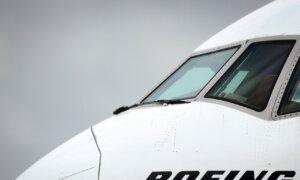The Police Department of Charleston, South Carolina, has finished its investigation into the death of former Boeing employee John Barnett, who could have played a prominent role in a lawsuit related to the jetliner maker’s quality issues.
In a statement provided to The Epoch Times, the Charleston police said they didn’t identify any evidence contradicting initial findings that Mr. Barnett died of “an apparent self-inflicted gunshot wound.”
The police were dispatched on the morning of March 9 to conduct a welfare check at a Holiday Inn hotel where Mr. Barnett, 62, was staying while preparing for his case against the aerospace giant. He was discovered sitting inside a vehicle with a “gunshot wound to the head,” with a notebook containing what resembles a “suicide note” located on the passenger seat.

“No evidence of forced entry was found and there were no signs of a physical struggle within the vehicle,” the police department said. “The vehicle’s key fob was discovered in Mr. Barnett’s pants pocket.”
The police also examined Mr. Barnett’s vehicle and recovered a Smith & Wesson handgun, a projectile that “caused the defect in the headliner” and a fired cartridge case. Those items were forensically evaluated by the South Carolina Law Enforcement Division Firearms Department.
“Examinations concluded the recovered projectile was discharged from the Smith & Wesson which was registered to Mr. Barnett,” reads a May 16 report shared with The Epoch Times by Charleston County Coroner’s Office. “Furthermore, during the autopsy, the trajectory of the wound path was documented. All findings were consistent with a self-inflicted gunshot wound.”
According to the coroner’s office, surveillance cameras at the hotel parking lot continuously showed Mr. Barnett’s vehicle throughout the evening of March 8 through the morning of March 9.
“From the time the vehicle was backed into the parking space until the Charleston Fire Department gained entry to the vehicle, no other individuals were seen entering or exiting Mr. Barnett’s vehicle,” the Coroner’s office said in its report.
“A review of medical records and interviews with Mr. Barnett’s family, attorneys, and healthcare professionals, revealed Mr. Barnett was under chronic stress in the context of the lawsuit, suffered from anxiety and post-traumatic stress disorder, and grieved the death of his wife,” the Coroner’s report read.
“During his time in Charleston, his attorneys reported Mr. Barnett discussed increasing the dose of his anti-anxiety medication,” it continued. “The writings found in the vehicle were examined by the Charleston Police Department and found only Mr. Barnett’s fingerprints on the notebook. The writings contained information known only to his family.”
“The cause of death was determined to be: Gunshot Wound of the Head. The manner of death is best deemed, ‘Suicide,'” the coroner’s report concluded.
Mr. Barnett, who had worked for more than 30 years at Boeing before retiring in 2017, had become a vocal critic of the company’s safety and production quality practices. At the time of his death, he was a key witness in a lawsuit, in which he claimed that the aerospace giant retaliated against him for raising his concerns with the U.S. Labor Department.
“We are saddened by Mr. Barnett’s passing, and our thoughts are with his family and friends,” Boeing said in a statement shared with The Epoch Times at the time.
The death of Mr. Barnett, who carried out safety checks and oversaw aircraft production while working with Boeing as a quality manager, came amid intense public scrutiny sparked by a Jan. 5 incident, where a panel covering an unused door came off an Alaska Airlines 737 Max 9 during the flight.
According to a report by the National Transportation Safety Board, this mid-air technical failure occurred because the four bolts that were supposed to be holding the panel in place were missing. The incident prompted the Federal Aviation Administration (FAA) to ground all 737 Max 9s, order “enhanced inspections” on the planes, and open an investigation to see if the company failed to ensure proper production safety standards.





